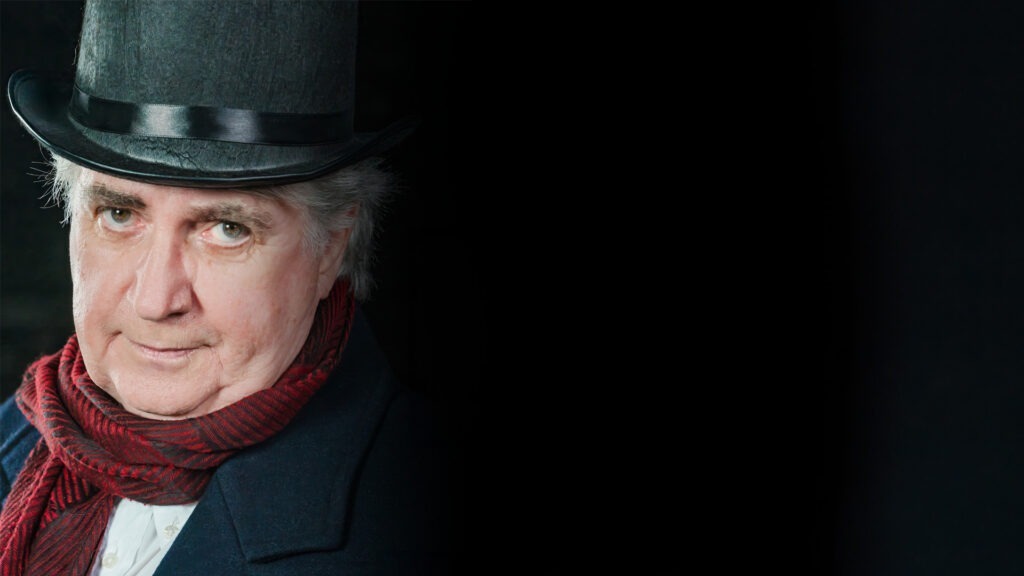
‘Great Expectations’ // Villanova Players
‘Great Expectations’ was grand.
How does someone find themselves amongst class inequality, unrequited love, and the yearning to achieve their full potential? Villanova Players’ most recent production attempts to tackle all these themes in an adaptation of the Charles Dickens classic Great Expectations, directed by Jill Cross in the Ron Hurley Theatre.
Great Expectations was first serialised in Dickens’s weekly periodical All the Year Round, from December 1860 before being compiled into a novel published in October 1861. A nineteenth-century bildungsroman, the story centres on Pip (Lachlan Gregory Hugh) and their coming-of-age journey from a troubled childhood into a mature young man, meeting an eclectic cast of characters along the way. Dickens’ source material has become a fixture in the Western literary canon, influencing generations and producing many adaptations across film, television, and the stage.
Entering the theatre, audiences are greeted with a tinge of orange lighting projected onto a white sheet, courtesy of lighting designers Cindy and Luke Monsour. A small brown table and a couple of wooden chairs are secluded to the right. This opening was apt in setting the mood for the underlying theme of class pertinent throughout the show.
Villanova’s production utilises a recent 2019 adaptation from Janys Chambers, relying on a rotating chorus and double castings to ensure a robust flowing journey for Pip.
Cross chooses a naturalistic lens to stage this adaptation. They use the characters’ status to influence a minimalist, stilted blocking around tables and levels across the Ron Hurley. Furthermore, the naturalistic style gives credence to Janys Chambers’ adaptation to do the heavy lifting by realising the beats, dramatic flow, and tropes found in bringing Dickens to life. To me, it was unclear if the resulting rigidness was consciously done to simulate the awkwardness of Pip’s own growing pains from the external surroundings of the characters or something done unintentionally. This issue might solely be the response to the script. While aesthetically faithful the adaptation doesn’t seem to translate as well as it could fully realise the visual medium of theatre to its fullest potential.
This disarming feeling is also felt in the projections done to achieve some of the interiors of the production’s set pieces. While some areas like Miss Haversham’s (Linda Stevenson) home are rich and detailed, with a looped black and white Victorian home complete with a flickering fire, others such as the home of Joe (Ian Stevenson) were only realised with a beige flash and a lighting change to a light yellow tone. I’m unsure if the resulting hollowness in the mise-en-scené was symbolically comparable to how Pip views the world and the vividness in which he wishes to immerse himself or an inconsistency in how to achieve it. I do applaud the crew for wanting to capture the scope of the Bildungsroman with the resources at play, but one wonders if fully doubling down on the set design’s minimalist aesthetic and finding a different route for these interiors would have been more interesting.
Where Cross’ direction shines is how they have guided their performers. Each cast member admirably performed their roles, all having moments of pathos or a moment of humour to send audiences in stitches. Hugh’s Pip holds themselves with naivety and an awkwardness necessary for a young man in over their head. Their evolution to a mature young man was believable. Emily Summer’s Estella is both icy and petulant. Stevenson’s Joe is warm and weary, as is Trevor Bond’s Magwitch. Gary Kliger’s double roles as Pumplechook and Jaggers were distinct and memorable.
Linda Stevenson’s Miss Havisham is beautifully portrayed as a curmudgeon, as is Helen Ekundayo’s Mrs Jo. Brent Jeffery is a deliciously evil rival for Pip’s affections as Drummle, while also realising Compeyson. Much support goes to Millie Douglas, Kathy Manning, Mady Flatters and Stuart Beavis in how they realised their characters.
Special mentions go to Dean Noffke’s Herbert, whose scrappiness and generosity brought dimensions to how they approached each scene, as well as Kathy Manning’s commitment to physical humour. Overall, each performer gave their best effort to realise the characters that make Great Expectations a memorable text in the eyes of the public.
The major stand-out of this version of Dickens’ work would be the costuming. Lia Surrentino and Desley Nichols must be applauded for their rich use of browns, reds, and whites across Act One, before switching to darker colourways and more pronounced overcoats and jackets. Their work expertly conjured both the period and class divide that Pip enters. Their work pleasurably lingers in the brain long after the show concludes. A real visual treat for audience members.
Villanova Players’ production of Charles Dickens’s ‘Great Expectations’ is a grand admirable undertaking for the cast and crew. Realising the epic story about love and loyalty against wealth and class is no easy feat. While some theatrical elements could be more fully realised, the charm held in its cast and symbolism illustrates why this story endures. It will no doubt be enjoyable for both fans of the novel and those familiar with the company’s work.
‘Great Expectations’ performs until Saturday 17th March at Ron Hurley Theatre. For more information visit their website.






